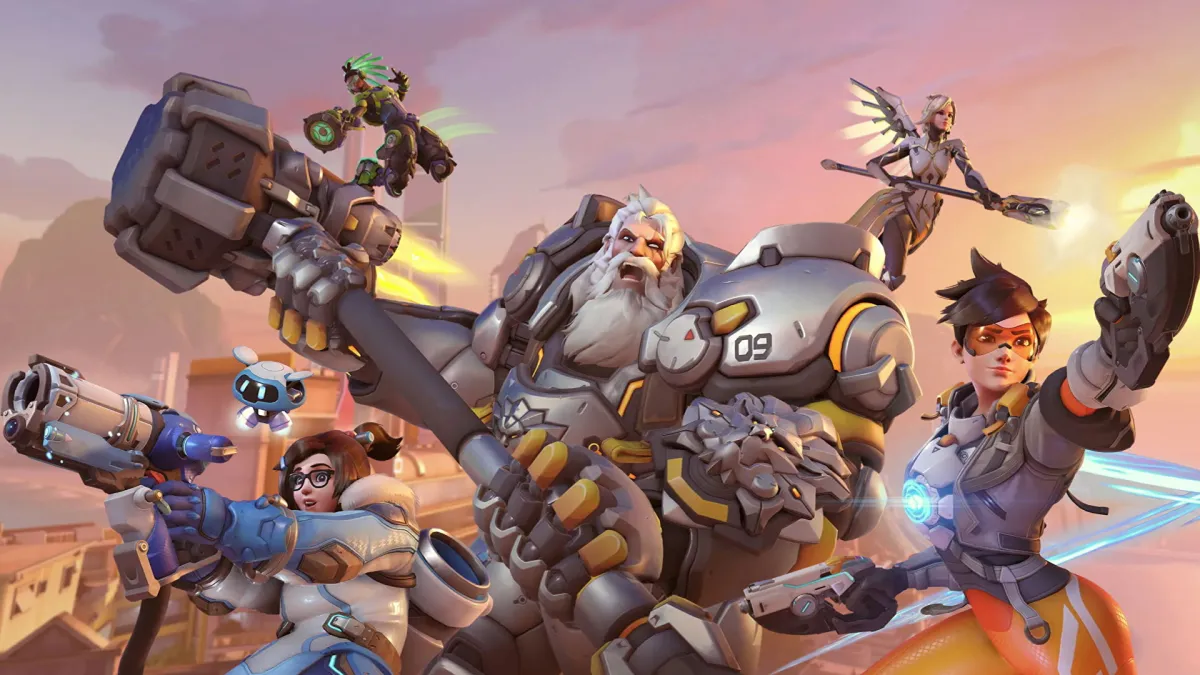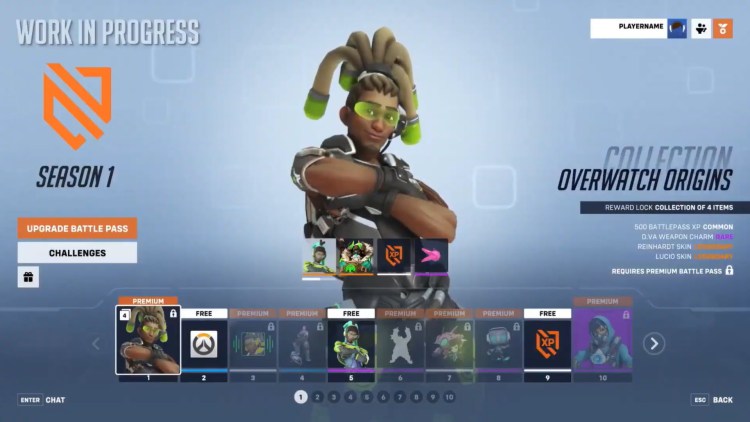Overwatch 2 has a lot to prove when it comes to gameplay, progression, and cosmetics. Overwatch was a shining star for the first-person shooter genre when it was released in 2016. It was a best-in-class, hero-based multiplayer game that spawned legions of dedicated fans, myself included, who genuinely cared about its lore, maps, heroes, and updates. Then, after a certain point, the momentum shifted for the worse. Developer Blizzard Entertainment stopped providing significant updates to the game, Lead Director Jeff Kaplan left, and recent allegations have ruined the image of the company. With all of that in mind, it’s been hard for fans to feel excited about a full-blown sequel that doesn’t even feel necessary.
Overwatch 2 is nearly upon us, and Blizzard has been trying to build back some goodwill with announcements like a shift to a free-to-play model and seasonal content. That certainly lowers the barrier to entry, and it could help to pull Overwatch fans back in. However, this new approach also has potential pitfalls that could prove disastrous for one of the most important aspects of the game: cosmetics.
The good
Free-to-play games have been associated with egregious monetization issues and gameplay that wasn’t up to standard. While that perception remains true for some games, there are now plenty of higher-quality, free-to-play titles that provide great experiences at no cost. Games like Apex Legends, Call of Duty: Warzone, and Fortnite have been leading the charge.
The free-to-play model used by Fortnite ensures that any unlocked cosmetics can carry over between platforms, and it seems like Overwatch 2 is going down this route as well. That helps players who want to play the game and move between different platforms over time. It’s a better solution when compared to Overwatch players feeling hesitant to switch between console and PC because they would lose their earned cosmetics. It’s also worth knowing that all cosmetics from Overwatch will be carried over to Overwatch 2, as well as existing currencies you may have, such as credits, competitive points, and Overwatch League tokens.
The shift to a Battle Pass progression system likely means that cosmetics will be harder to earn for free. However, Fortnite does a good job at giving players free cosmetics during special occasions. We hope that Blizzard takes a page out of Epic Games’ book in this regard. Changing to a nine-week seasonal model also means that new skins and items should appear more frequently, including the new Mythic tier of skins which have customizable elements.
The idea of an in-game shop is fraught with potential issues, but it could also help to alleviate a long-standing complaint that fans have had. Namely, Overwatch fans felt frustration at only being able to obtain specific skins once or twice a year as they rotate in and out of limited-time events. Those same skins could now reappear more frequently in the in-game shop. It would be more convenient, but this brings us to the issue of monetization.
The bad
While Fortnite demonstrates how the free-to-play model benefits cosmetics, other games show how it can go wrong. Halo Infinite is also a free-to-play shooter, and it was met with positive reception at launch. In the months since that release, it’s received plenty of criticism from fans complaining about the slow rollout of new content, technical problems, and monetization woes. The Season 1 Battle Pass did not allow players to earn any virtual currency, meaning that they had to pay up once more for the Season 2 Battle Pass. To make matters worse, the in-game shop placed high price points on cosmetics that did not seem worth their value. Since Overwatch 2 will implement a Battle Pass and an in-game shop, we worry that these same problems could arise in Blizzard’s sequel.
A big change for Overwatch 2 is the removal of loot boxes. Players have complained about the predatory nature of loot boxes in online multiplayer games for a long time, so this should be cause for celebration. On the other hand, loot boxes did allow players to earn free cosmetics. Swapping loot boxes for a Battle Pass effectively removes any way of earning desired cosmetics for free unless Blizzard is generous enough with its special events. On top of that, locking the cosmetics behind paywalls feels antithetical to Overwatch’s core themes about being welcoming and inclusive to all players. For all the justified controversies leveled at loot boxes, at least they allowed Overwatch players to earn cosmetics for free.
And the ugly
As of right now, we don’t know what Blizzard plans to charge for each element of Overwatch 2. That includes the real-world price of the Premium Battle Pass and the individual prices of cosmetics in the in-game shop. Overwatch 2 already has a bundle that players can purchase called the Watchpoint Pack. This comes with the Premium Battle Pass for Season 1, two Legendary skins, 2,000 of the new currency, and a Player Icon. It also gives players immediate access to the Overwatch 2 beta and a copy of Overwatch Legendary Edition. That’ll set you back $40 USD, and that feels admittedly steep for what’s on offer.
It’s important to note that Seasons 1-3 of Overwatch 2’s Premium Battle Pass are priced at 1,000 Virtual Currency each, and this raises further concerns. Blizzard is yet to discuss whether we can earn currency as part of the Premium Battle Pass, and the emphasis on Seasons 1-3 costing 1,000 VC suggests that the price could increase down the line. Halo Infinite has recently seen gradual increases in the pricing of its in-game cosmetics which flies in the face of developer 343 Industries addressing fan criticism just a few months prior. It’s not hard to imagine a similar situation with Blizzard and Overwatch 2.
Blizzard has traditionally been slow to roll out new content, and this presents another problem. A free-to-play, live-service game is expected to consistently produce new content on a regular cadence. When Blizzard stopped providing major updates to Overwatch, the quality of new cosmetics also became more inconsistent. Overwatch 2 is attempting to provide new cosmetics, maps, heroes, and updates every nine weeks as part of its seasonal model, and that gives us some pause. Can the studio truly keep up with a release schedule of high-quality content like that, given that it couldn’t for the previous game?
Cosmetics are a large part of the appeal of the Overwatch series, so it would be a shame to see Blizzard drop the ball on them with poor monetization practices and a roadmap that can’t be delivered upon. Blizzard has a lot of work to do to prove that Overwatch 2 and its cosmetics can thrive in a free-to-play model.










Published: Jun 24, 2022 5:30 PM UTC